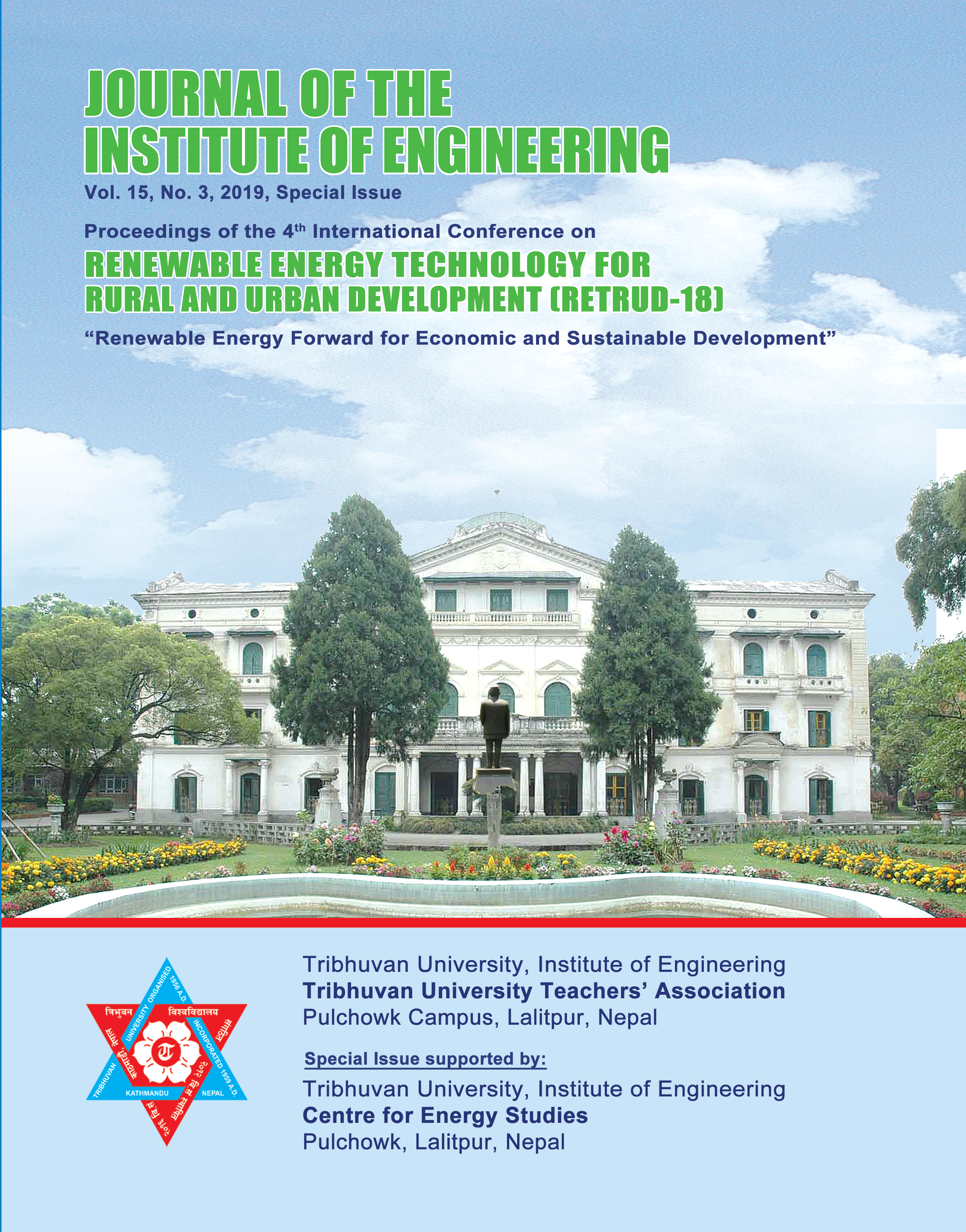Wind Farming Feasibility Assessment in 16 Locations of Nepal
DOI:
https://doi.org/10.3126/jie.v15i3.32183Keywords:
Feasibility Assessment, Weibull Distribution, Wind Farming, Wind Rose, Wind SpeedAbstract
The paper assesses the feasibility of wind farming at the 16 sites scattered in different ecological regions of Nepal. The wind speed, the hourly and seasonal variation of wind, the wind-rose, the wind turbulence rate, the wind power density, the Weibull probability distribution and the frequency of the wind speed above cut in speed were computed. The average wind speed at all the sites was found to be higher during the dry season from March to May. The wind speed of the modern turbine for power generation at eight sites was found to be above cut-in speed. However, the wind power density was found to be good only at the two sites and fairly good at the six sites. More than 50 % time of a year at these eight sites had over 3.5 m/s wind speed. However, the turbulence rate at all the studied sites was found to be above the acceptance range of 25 %. Among the study sites, Kagbeni, Thini, Jumla, Ramechhap, Vorleni, Patan west, Hansapur and Baddanda were found to be technically feasible sites for wind energy generation in Nepal.
Downloads
Downloads
Published
How to Cite
Issue
Section
License
The Copyright is held by Journal of the Institute of Engineering, IOE, TU




